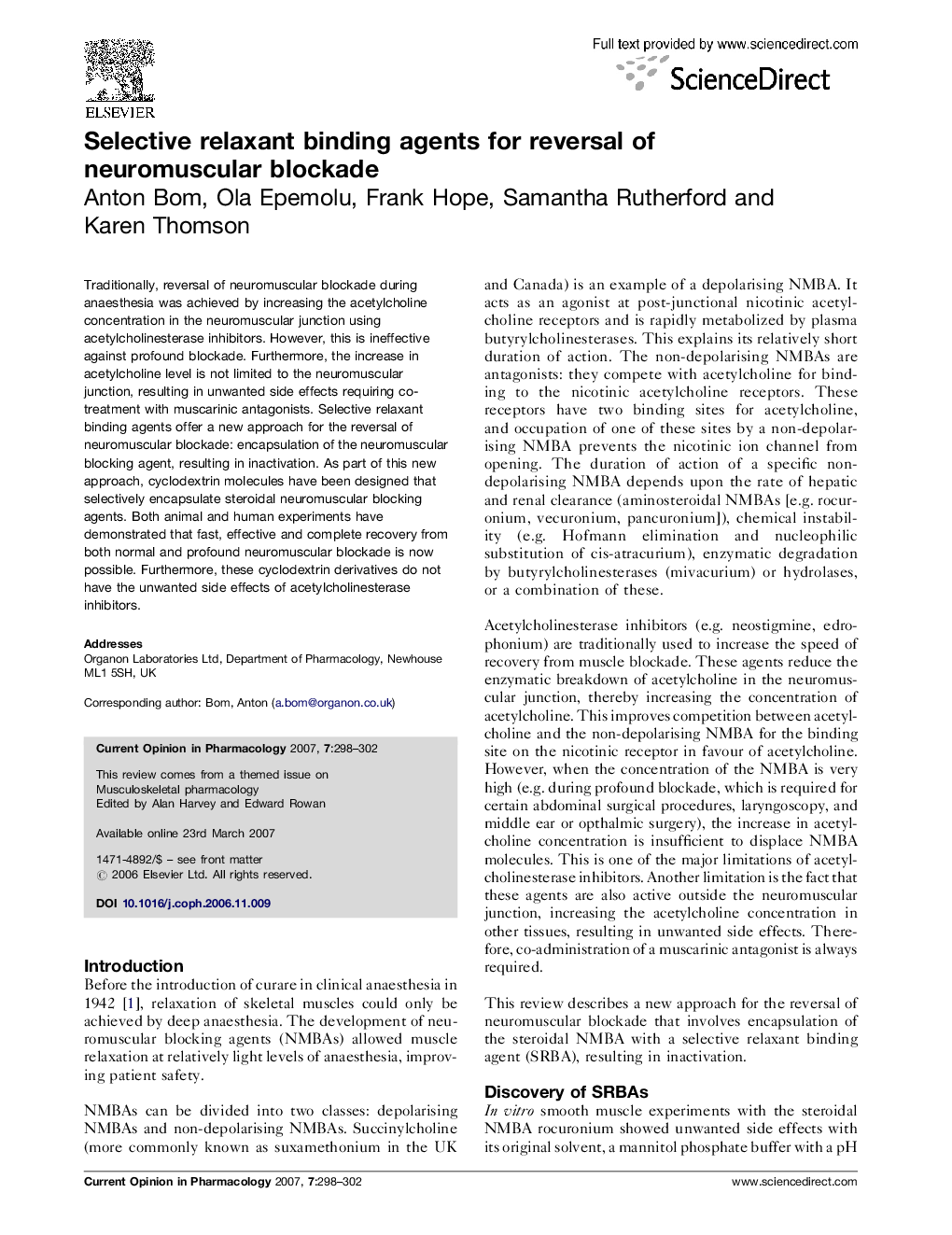| Article ID | Journal | Published Year | Pages | File Type |
|---|---|---|---|---|
| 2530601 | Current Opinion in Pharmacology | 2007 | 5 Pages |
Abstract
Traditionally, reversal of neuromuscular blockade during anaesthesia was achieved by increasing the acetylcholine concentration in the neuromuscular junction using acetylcholinesterase inhibitors. However, this is ineffective against profound blockade. Furthermore, the increase in acetylcholine level is not limited to the neuromuscular junction, resulting in unwanted side effects requiring co-treatment with muscarinic antagonists. Selective relaxant binding agents offer a new approach for the reversal of neuromuscular blockade: encapsulation of the neuromuscular blocking agent, resulting in inactivation. As part of this new approach, cyclodextrin molecules have been designed that selectively encapsulate steroidal neuromuscular blocking agents. Both animal and human experiments have demonstrated that fast, effective and complete recovery from both normal and profound neuromuscular blockade is now possible. Furthermore, these cyclodextrin derivatives do not have the unwanted side effects of acetylcholinesterase inhibitors.
Related Topics
Life Sciences
Neuroscience
Cellular and Molecular Neuroscience
Authors
Anton Bom, Ola Epemolu, Frank Hope, Samantha Rutherford, Karen Thomson,
